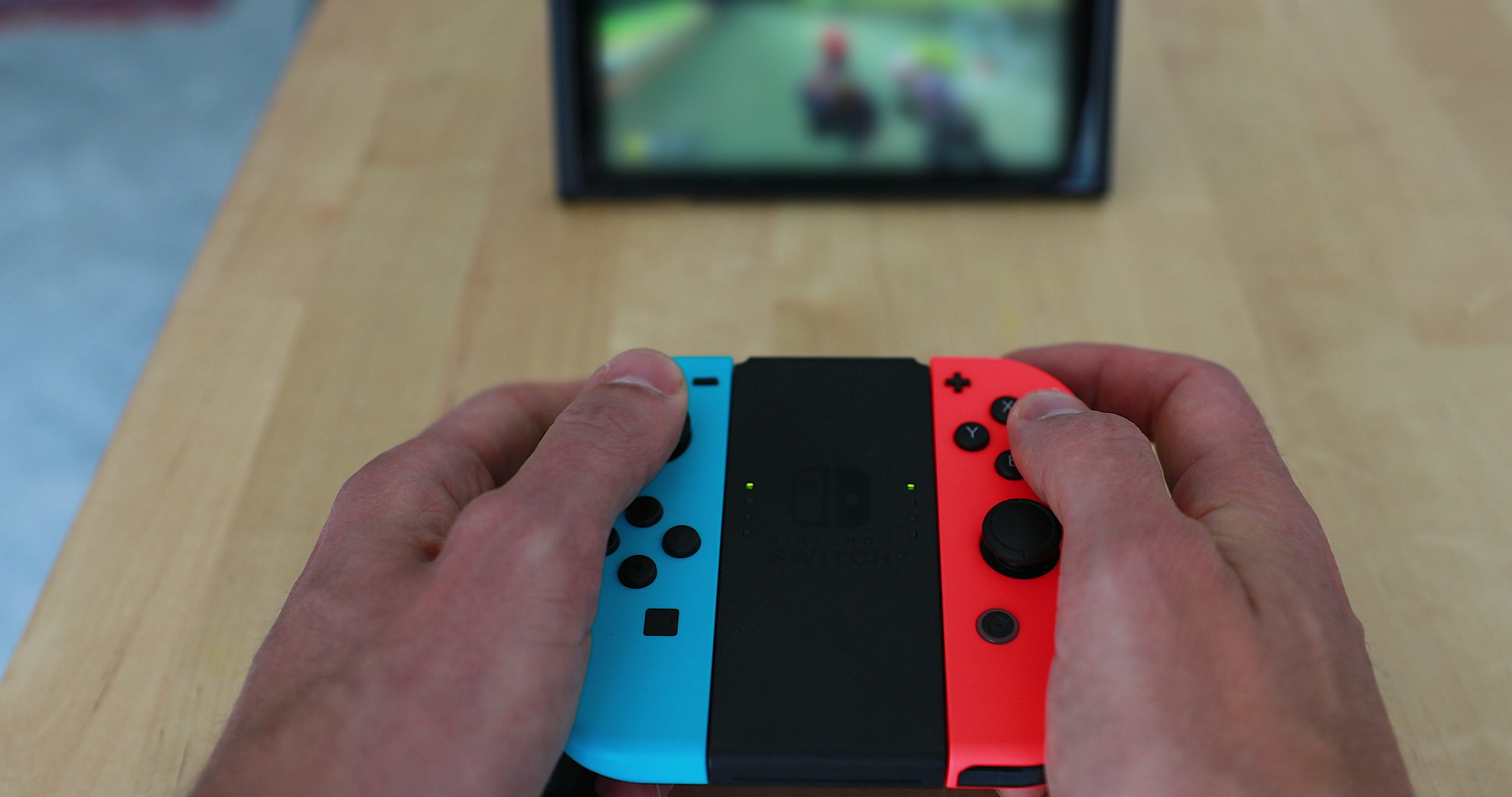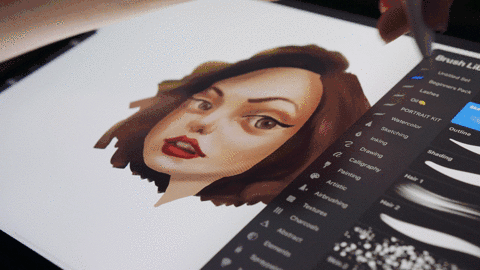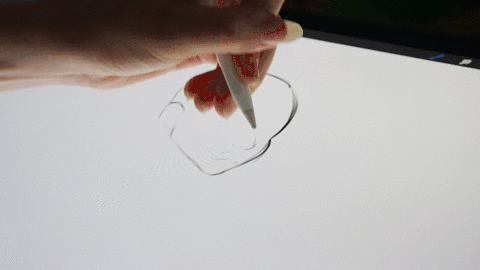Game art is a specialized form of computer art employing games as the artistic medium. The use of patched or modified video games necessary game art. Sometimes, the repurposing of existing games or game structures need game arts. However, game art relies on a broader range of artistic techniques and outcomes than artistic modification and it may also include painting, sculpture, appropriation, in-game intervention and performance, sampling, etc. The creating of game arts may also include either from scratch or by modifying existing games.
Game art includes concept art, character art, environment art, tech art, character animation, visual effects, sound design, user interface design and final video game on game design. These are core principles of game art. I wrote this article about game art to help you create games based on the help of experienced artists of GameFactory, outlining their core principles and getting a ton of solid advice for starting out. The article is made for you if you are interesting in games or creating games.

Game art is basically everything you see and hear in a game. Game artists are responsible for the characters, the effects, the enemies, the environment, the UI, the animation and the sound as well. Game art is way more than just a pretty wrapping on a game. The overall role of a game artist can be broken down into three parts; clarity, satisfaction and style.
- Clarity is basically communication to the player telling what is happening in the game like where you are located, who your ally is, who your enemy is and what your mission is. These are those kinds of critical information that has to be immediately clear to the players. And that clarity is a difficult matter for game artists as a player needs to understand many facts in a really short amount of time. If you have ever played in a team fight of DOTA, you would understand how much important Clarity is.
- Satisfaction is giving clear and responsive feedback to player actions. This includes things like immediate change in the game like feeling good when you succeed, or feeling bad when you fail. But how to deliver clarity and satisfaction is a whole question into itself. It may be a meaty hit pause, a huge ceremony, flowing momentum, or jumping around instantly. Every game action need to be responsive and satisfying to engage in.
- Game art style is an important factor after the game artist decides which type of clarity and satisfaction he would use. Every game has a different art style. The colours, the character designs, the environments are different in every games and every different type of art style can evoke a different emotion. As an example, PUBG and Fortnite have the same game play but you would feel different feelings to play them. Fortnite has a lot more colour, the proportions of the characters are very pushed and evokes a little more light-heartedness while PUBG has a little less colour, a little more serious in tone with realistic guns and environments. And different game art styles of these two games would make you feel super different when you play the game.
So the role of a game artist is to make the game clear, and the game is satisfying to interact with and the art fits a cohesive art style that acts an emotional tone. But games has thousands of pieces of game arts that are pretty hard to keep them from clashing. That’s why it is critical to establish a visual hierarchy.
Visual hierarchy means the most important informant and the easiest to see. Artists create visual hierarchy by manipulating contrast to create areas of focus. Everything the game artists do can be framed in terms of contrast, both for creating focus and the overall feeling of an image. There’s shape contrast, colour contrast, situation contrast. You can create contrast with size, layout, or position. All art forms actually between sound, music, and narrative use contrast some way.
Moreover, you need to focus on quantity than quality, if you are really a start out. You would become better trying many times than trying one giving much time. And really, talent is not as important as dedication. If you think you are not talent enough to do game art, you would have to do the only thing. That is “Don’t stop it”. And the game artists of GameFactory are ready to support you everything they have through this landing page.

Table of Contents
Concept Art
Concept art of game art is not drawing so beautiful, so awe-inspiring in its exquisite detail or beautiful and detailed drawings. The jobs of concept art is to solve team problems through designing visual solutions. Drawings and paintings are important tools to communicate those ideas.
Concept artists are involved in the earliest phases of game development. They are important game artists to figure out what the game is going to be and how it is going to look like. As for a concept artist, you can basically do whatever you want with no limits and no constraints.
To be a concept artist, it is very important to solve the problems. If you want to be a concept artist of game art, there are things that you should remember. That is “ABS” meaning always be solving. That means that you should know what problem you are trying to solve. Just drawing something cool doesn’t push the team towards the goals. Before drawing game art, you need to find out what you are solving and establish your constraints.
Constraints help narrow the focus of a concept artist and they prevent endless spinning on ideas. Thematic constraints, like lore, the setting and the tone of the game limits the kind of content a concept artist will brainstorm. The rules and mechanics in a game set huge constraints as well.
After you see the problems and set constraints, than you need to research for your concept art. If you want to create adventure games, you should try to play other adventure games or you should explore yourself outside. If the game setting is on a mountain, you should research a lot of mountains and you may go to even one. Collecting those things will make your create a mood board. Through those mood boards, you would find it easy to generate more ideas for your game art.
Then what you should do is to start generating ideas. In our GameFactory, the game artists start to draw what design they should do for their games. Through the sketches, they choose the best one and that technique is called closing doors. There are many sketches to choose and then the artists select the best one for their game and then they upgrade enough to use in the game. Then what you should do is navigating feedback. Through navigation, you would know what to do next.

Character Art
After concept art, then you should decide and create your character art that may be heroes, villains, zombies, robots, dinosaurs, and even mushrooms. These all are examples of video game characters and they are made by character artists. The jobs of a character artist involves sculpting, painting, and studying anatomy of their characters. The artists often model, texture and often design the characters that appear in a video game by working closely with concept artists.
But the duties of a character artist is much more than designing the characters. The hardest part of them is to capture the fantasy of a character even if they are really tiny on the screen. After bringing the characters into 3D, they want to capture the iconic qualities of the concept and if possible, even enhance them.

Environment Art
Through games, we have gone to thousands of beautiful locations. Through games, we can experience shooting inside a forest, driving in Los Angeles, battling in World War II fields, or simulating a bus on a high-way road. When you are playing games, the environment occupies more than 90 percent of your screen. Environment is the whole world where the game is taking place and so the environment is so vast that it was created specially by environment artists.
Since there are many things for an environment artist to draw in a game, what he need to do is to prioritize the important features of overall game experience. So, they have to work closely with game designers and concept artists to be clear enough for gameplay goals. Firstly, environment artists have to decide theme and tone of the environment and then they create a blockout just using grey blocks. They decide where the obstacles are and where enemies come from and where you need to go.
With those kinds of information, the environment artists can start to rough out art that represents both the concept artist’s vision and the game designer’s constraints. Then they start refining the models adding textures, colours and smaller details, playtesting the game a lot and getting feedback. And at the end, when all have been playtested and it’s working, we all add lighting, post-processing effects, and any kind of polish notes that they might have. Environment artists have to guide the players and establish a clear visual hierarchy to maintain clarity in a game.
Technical Art
Video games are constantly pushing the technology to the limit and the art in the video games has no exception. Video games include things like elaborate physics simulations, seamless open worlds, complex animation systems and destructible environments. To be able to do these tasks, it is necessary to have both artistic sensibility and technical knowledge. So, only the people who can do both art and programming are able to do these tasks and they are called technical artists.
Technical art is very important for making games. What are the duties of technical artists in game art? Well, they create tools for artists, streamline the game creation pipeline, make game exporters, and make implementation easier and some artists work for the game content rigging characters for animation. Moreover, there are also file structure, version control support, automation and art backgrounds that technical artists are responsible for. Moreover, tech artists have to model, animate, VGX, build interfaces, UI, websites, shades, and lighting. There are many responsibilities for a tech artist. But their main job is to streamline how art is made and put into the game.
Tech artists create skeleton for characters so that they could have ability to move. Then, they customize existing programs like Maya, Z Brush, Photoshop, Unreal to do a lot of stuff for artists.
Character Animation
Character animation is a form of game art using all about poses and motion to bring characters to life. This is about how animators breathe life into the game characters in game art. Have you ever watched animated films like Tom and Jerry or Cinderella? All you watched in those films are created through character animation. Character animation has a rich history. It even has 12 official basic principles of animation already defined by Frank Thomas and Ollie Johnson in the book “The Illusion of Life”.
But for creating character animation, there are three main basic principles. They are clearly displaying actions, believable motion and physics and injecting personality.
- Clearly Displaying Actions. When you play a game, you need to know what is going to happen in a game so that you could prepare for yourself. The animator’s job is to show when a game character is performing or reacting to an action like showing when a character is running, jumping, dancing or about to punch.
- Believable motion and physics. Game animation puts a lot of importance on creating believable and impactful motion for characters. Whether it is a realistic game or a more fantastical one, creating consistent motion and physics helps immerse players with the game and allows the player to predict how objects and actions will affect the world they play in.
- Injecting Personality. Gameplay animation does not always have the opportunity for a long narrative scene. Every action is still an opportunity to show who a character is and how they are unique from other characters.
VFX or Visual Effects
VFX is a short form that stands for visual effects. VFX artists in games are responsible for things like sparks, bullets, blood spurts, splashes, lasers, clouds, magic, light beams, fireballs, sword swipes, and tons of other stuff. It is one of the most diverse set of skills out of any in the game development process.
Visual effects in games run in real-time which means they have to be created much more efficiently than the pre-rendered effects often found in film and cinematic videos. Real-time VFX are on the cutting edge meaning that there is not a formula to create them. But there are common techniques and methods used in creating VFX by effect artists. Game artists create effects using game engines like Unreal or Unity through particle systems. A particle system consists of an emitter and an emitter is basically an invisible point in space that can fire things like sprites, and models into the air. By using those particles of VFX system, a VFX artist can create a stream of water that can reacts to gravity can collides with object or a single thing existing in one space.
The most common example of VFX is a projectile like fireball. And a fireball consists of three parts, the primary, the secondary and the tertiary parts. The primary is head and so the artists made it through a sphere by halving it. Then the secondary part is waves. And the tertiary part is something that supports the effects of fireball. But there is something to aware in creating effects is that too much effects would destroy the clarity of the game.
There are three important factors in creating VFX effects. These are shape language, colour and timing. The VFX artists choose different shape designs to clarify for the gamer to see what is happening in the game like plus sign for increasing hit points, circles for protective shields and straight arrow-like effects to demonstrate designs. And colour is an important matter in VFX design. Mostly the colour red demonstrates blood or hit point or importance. If you play star wars, it is very clear that the bullets that you and your allies shoot are green whereas those of enemies are red. But it is important to know that too much colour could make you crazy.
Sound Design
Sound is very easy to add in a game but it plays a critical role in every game experience. Even a single sound can take the entire mood of a scene. Although the sound of a door can make you feel any feeling. A little change in the sound of a door can make you feel happy, sad or terrifying. Sound design is critical in every game as it adds feeling to the gaming experience and it is the core thematic of a game in a way to truly satisfying and deeply emotional.
There are three different parts for sound design in games; providing gameplay cues, giving the player feedback and driving the core emotion of a game. Sound design of game art plays an important role for the player to understand what is happening to him in game environment, e.g. to show you are damaged, some of your weapons are ready or the enemies has noticed you. And sound art is an important thing to give a player feedback about good or bad. And sound is really driving the gamer throughout his game. So, sound design is very important for game development teams.
User Interface designs
This game art is created by UI designers. UI designs are different from UX designs. UI designers create mechanical targeting systems, helmet displays, ammo counters, character action icons, district management menus, spaceship diagnostics, chair telekinesis indicators, gun crafting interfaces and murder wheels.
So, what is UI? UI or User Interface is the interface through which a player interacts with a game. Sometimes, UI is called UX but it is different from UI. User means User Interface itself or all the basic elements that make up the user interface. UX is a short form of User eXperience. UX is the entire information architecture of the game. Basically, it is all about where to store all the information in a game and how that information is accessed by the player. Basically, UI and UX are very similar and sometimes they work together in the same role.
Game Design
If we want to talk about game design, firstly, we need to talk about game. What is game? Well, games may be anything from tennis, Monopoly, football, World of Warcraft to Dungeons and Dragons. So, what do these activities have in common to be called as a game? Well, a game generally have four basic components;
- A goal: some objective to be completed.
- A Composition: Something that have to be overcome to complete that objective.
- Decisions: the ways to surpass the opposition and reach goal.
- Rules: a framework around all this stuff that governs the whole experience.
From this rules, we know that playing football is a game but eating sandwiches is not. But if we add some rivals and some rules, eating sandwiches could become a game.
Based on the rules, the game artists have to add some fun to entertain their gamers. But, the word fun is very vast and there are many types of fun. Based on the different types of fun, the fun that each game gives different. Some games give an impressive narrative style of fun at the core of their experience. But if you add such kind of narrative to Dota 2, the players would get angry listening the narratives without caring battles. Game art and game design are very close in a game. The game designers design the game based on the rules and the game artists make it look pretty.
